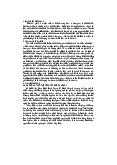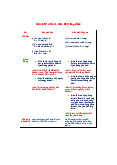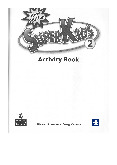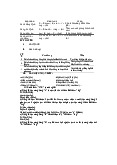


Preview text:
HANDOUT 1:
Circle the best answer for the following sentences
1. What is the organ that pumps blood all throughout the human body? A. The lungs B. The heart C. The kidneys
D. The blood vessels and capillaries
2. The heart is the size of your fist and is a/an _________. A. Organelle B. organ/muscle C. organelle/muscle D. muscle
3. The upper chambers of the heart are called the __________ A. Artery C. ventricle C. atrium D. ventricles
4. The lower chambers of the heart are called the __________ A. Artery C. ventricle C. atrium D. ventricles
5. The heart has how many chambers? A. 1 B. 2 C. 3 D. 4
6. The right side of the heart pumps the blood _____ the heart ______ the lungs. A. to, from B. from, to C. to, to D. from, from
7. What divides the left side of the heart from the left side? A. Septum B. Atrium C. Ventricles D. Wall
8. What are the pumping chambers of the heart? A. Right and left ventricles
B. Right and left atriums C. Pulliminary trunk
9. Which carry blood away from the heart? A. Vena cava B. Peristalsis C. Arteries D. Veins
10. The movement of blood through the heart and body is called: A. Circulation B. Locomotion
C. Ventriculation D. Heart pump
11. With circulation, the heart provides your body with: A. Oxygen B. Nutrients C. A way to get rid of waste D. All of the above
12. The atria are the “upstairs” chambers of the heart and these parts are the “downstairs” chambers: A. Valves B. Ventricles C. Blood D. Candy hearts
13. What wall separates the left side and right side of the heart? A. Ventricle B. Atrium C. Septum D. The great wall
14. What parts act like doors that control blood flow in the heart? A. Valves B. Heart dams C. Kidneys D. Chambers HANDOUT 2:
Circle the best answer for the following sentences
1. What is the largest blood vessel? A. Aorta B. Artery C. Capillary D. Veins
2. Blood vessels that carry blood away from the heart are called _______________. A. arteries B. veins. C. capillaries D. All are correct
3. The smallest type of blood vessels are _____________. A. arteries B. arterioles C. venules D. capillaries
4. Blood pressure is highest in the _______________. A. arteries B. arterioles C. veins D. capillaries
5. _____________________ carry blood to the body. A. arteries B. arterioles C. venules D. capillaries
6. ______________ act as a bridge between arteries and veins. A. arteries B. arterioles C. venules D. capillaries
7. ____________________ are stretched, tortuous veins near the body’s surface. A. varicose veins
B. Tortuous veins C. capillaries D. arterioles
8. Arteries branching away from the heart become ________________. A. thinner and thinner B. smaller and smaller C. larger and larger D. narrower and narrower
9. Veins leading back to the heart become ______________________________. A. thinner and thinner B. smaller and smaller C. larger and larger D. narrower and narrower
10. The thin walls of the capillaries allow ___________ to pass from the blood into tissues A. oxygen and nutrients B. waste products C. carbon dioxide D. enzyme HANDOUT 3:
Circle the best answer for the following sentences
1. The term “angiopathy” refers to disease of the _____________. A. heart B. atria C. blood vessel D. vein
2. The medical term “phlebectomy” express the surgical removal of a part of a ______ . A. heart B. atria C. blood vessel D. vein
3. The root “aort-” in the medical term “aortitis” means _____________. A. heart B. aorta C. blood vessel D. valve
4. The sussfix “-dilation” in the medical term “vasodilation” means ________________. A. inflammation B. excision C. narrowing D. widening
5. The medical term expressing surgical insicion of an atrium is __________. A. atriotomy B. phlebotomy C. valvotomy D. ventriculotomy
6. If I find something new about the treatment of myocardial infarction, I _______ you. A. tell B. tells C. will tell D. told 7.
If we can analyze genomes, we _____________ infer laws and principles about them. A. will be able to B. be able to C. will able to D. able to 8.
If you _______ a lot of sweets, you __________ bad teeth. A. 'll eat, have B. 'll eat, 'll have C. Eat, 'll have D. eat, have 9.
If you ___________ coffee at night, you ___________ . A. Drink, will sleep B. Will drink, will sleep C. Drink, won't sleep D. drink/sleep
10. Our teacher ______ angry if we __________ our homework. A. Is, won't do B. Will be, don't do C. Be, don't do D. is, do




